
EARLY VERDICT
It might be larger version of its predecessor, but the GFX 100 not only handles well, it picks up an impressive amount of details in the shadows, thanks to its 102MP sensor. Add to that the speedy autofocus, uncropped 4K video and 16-bit RAW files, it’s twice the camera the GFX 50S was… albeit with double the price tag.
FOR
- 102MP BSI CMOS sensor
- Built-in image stabilization
- Phase-detect autofocus
- Built-in vertical grip
- Impressive EVF
- Virtual dial mode
- Uncropped 4K video at 30fps
- Weather sealed
AGAINST
- Handling may be difficult for some
- Expensive
The photography world has been abuzz with news of a Fujifilm 100MP medium format camera since last year, and after months of teasing it’s finally made its official debut. While a handful of GFX 100 specs details trickled out early, the full list of the new high-resolution camera’s full specs have only just been revealed.
And although the GFX 100 is technically a medium format snapper, Fujifilm isn’t enamored by the label. Instead, the Japanese manufacturer has dubbed it a “large format” camera, given the size of its CMOS sensor. Not only is that 102MP sensor 70% larger than a 35mm full-frame equivalent, the GFX 100 is the world’s first medium format camera to feature a backside-illuminated (BSI) sensor.
That’s not the only thing that makes the GFX 100 a revolutionary piece of kit either; there are quite a few “world’s first” labels here. It’s the world’s first 4K medium format camera as well as the world’s first medium format camera to boast in-body image stabilization (IBIS).
We spent a brief bit of time with the final GFX 100 retail unit as well as a prototype during the launch event and discovered a bit more about Fujifilm’s latest snapper – here’s what we thought.
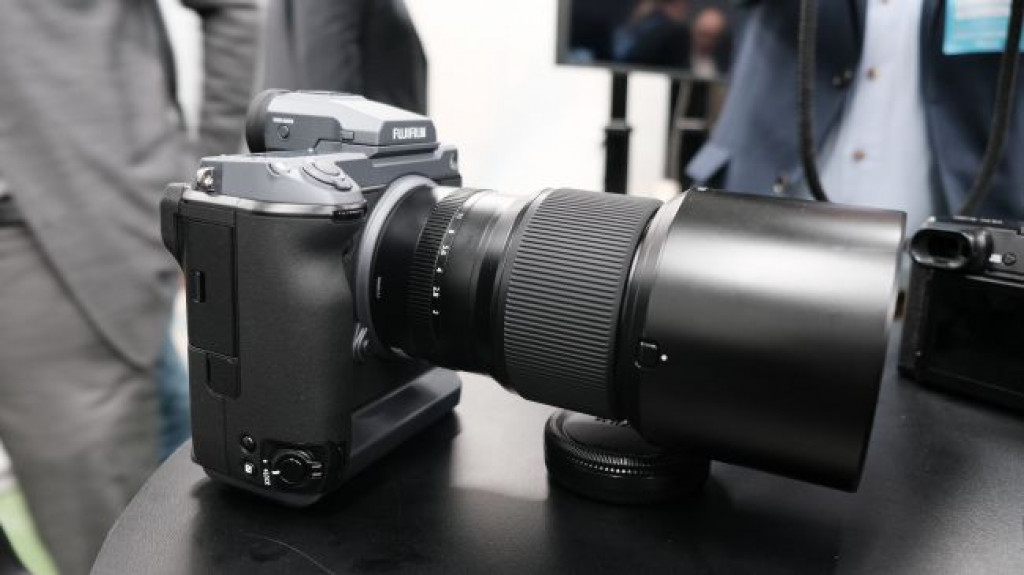
Fujifilm GFX body & design
If you’ve got small mitts, then the GFX 100 will feel rather large in your hands. It’s essentially a larger version of the GFX 50S, thanks to the built-in vertical grip with its mirrored controls, and it handles very much like a DSLR.
The addition of the vertical grip has some advantages. The first is the ability to double battery capacity, and the second is the extra space at the bottom of the rear LCD display, where Fujifilm has incorporated a 2.05-inch monochrome OLED sub-display that offers key shooting information at a glance. The main LCD display is a 3.2-inch touchscreen that sports a resolution of 2.36 million dots and is capable of tilting in three directions.
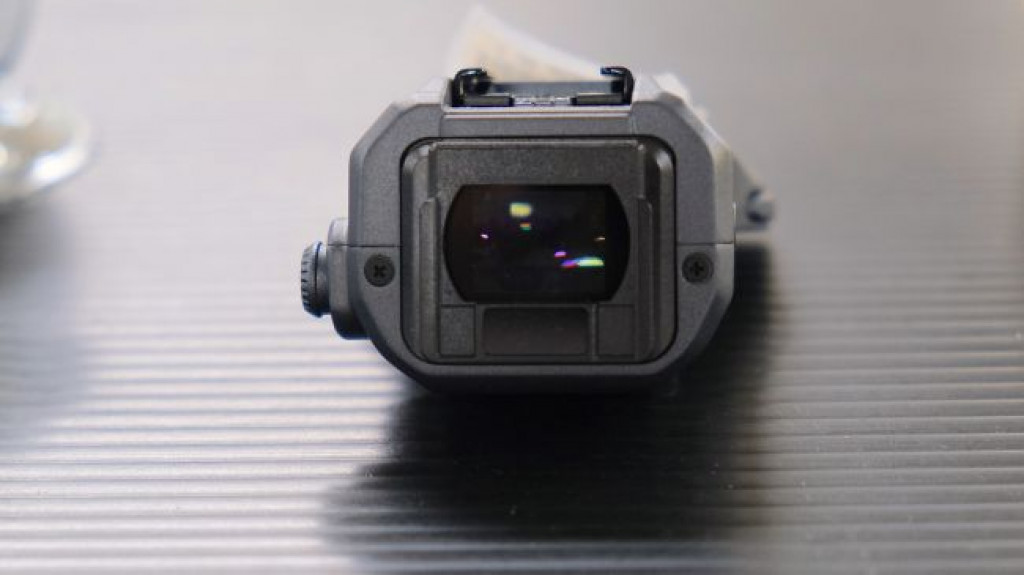
Fujifilm has upped the ante when it comes to the removable electronic viewfinder (EVF) on the GFX 100. It’s a new OLED design with a staggering 5.76 million-dot resolution that offers a magnification of 0.86x (the GFX 50S had a 3.6 million dot OLED EVF with a magnification of 0.85x) and offers an exceptional mix of both vibrance and clarity.
Fujifilm has also changed the general control layout of the camera as compared to the older GFX cameras. While the playback button has been moved from the top left of the camera to the bottom right, the directional buttons have completely disappeared. All the buttons to the right of the LCD display are now labelled for easier recognition (unlike the GFX 50S).
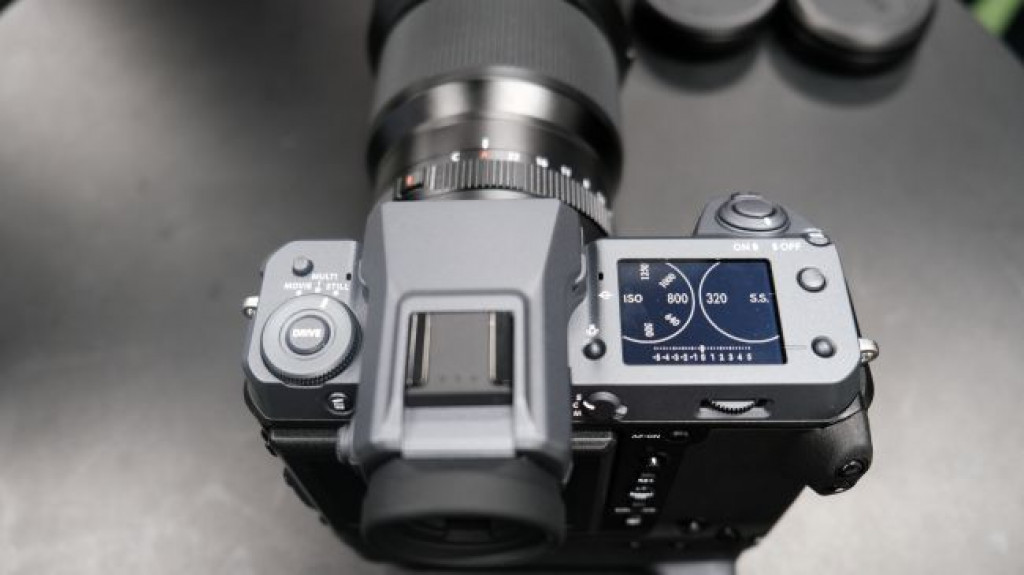
The major change is on the top plate. Gone are the familiar Fujifilm control dials; instead there’s a 1.8-inch sub LCD screen which can be set to work in a “virtual dial mode” – meaning that instead of displaying the usual shooting info, the display will show the images of the dials for ISO and shutter speed. While the virtual dials may look like they’re touch sensitive, they aren’t. These settings can be changed using the front Command Dial – turn it to change one, then press and turn to change the other virtual dial. If you don’t want the virtual dials, the display can even be set to show the histogram.
To the left of the EVF is a new Drive button with an outer dial labelled ‘Movie’, ‘Multi’, and ‘Still’. Fujifilm says these options are to make shooting easy – choose one and the camera will select the appropriate settings automatically, but they can always be adjusted using the virtual dials.
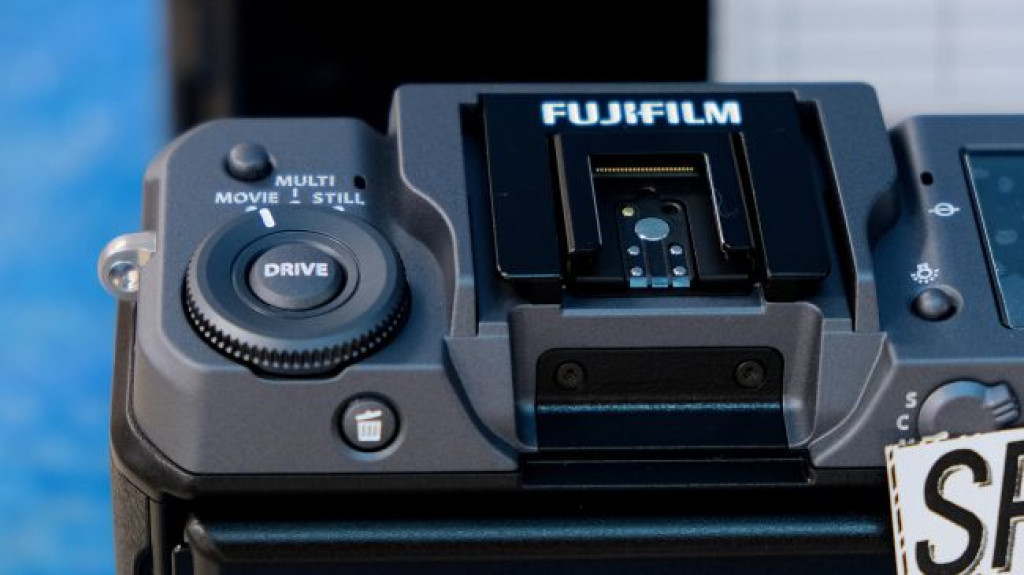
The GFX 100 has been designed for the rugged outdoors and is weather sealed in 95 spots throughout the magnesium alloy body.
There are dual SD card slots here, both UHS-II compatible, and we would strongly recommend using speed class 3 (or video speed class 60 for 4K capture) with this camera.
There’s a USB 3.2 Type-C port for in-camera charging and a 3.5mm jack for audio, alongside a 2.5mm remote release jack.
Shooting and autofocus
Working alongside the GFX 100’s impressive megapixel count is the X-Processor 4 engine from the X-T30, enabling the new camera to lock on to subjects as quickly as 0.05 seconds. Fujifilm claims this is about 210% faster than the GFX 50R’s AF speed. The promise of speed is matched with increased accuracy, particularly when tracking movement and shooting low-contrast subjects.
Also like the X-T30, the new hi-res snapper features phase detection AF with a staggering 3.76 million points to choose from and covering practically the entire frame – the GFX 50S, for comparison, uses contrast-detect AF with only 425 available points. There’s even improved face and eye detection.
Continuous burst speed is 5fps (as compared to 3fps on the 50S), with buffer depths of 41 JPEGs and 14 lossless compressed RAW files (or 13 uncompressed RAW files). Using the electronic shutter, however, will drop the frame rate to 2.9fps. The GFX 100 is capable of capturing 16-bit RAW files in single-shot mode and 14-bit shots when using continuous mode.
As we mentioned earlier, this is the first time uncropped 4K video capture has been incorporated in a medium format camera. The GFX 100 can record both DCI (4,096 x 2,160) and UHD (3,840 x 2,160) at up to 30fps using the entire width of the sensor. There’s also the ability to use the cinema oriented Eterna Film Simulation mode. 4K output is 4:2:2 10-bit uncompressed video via HDMI, or 10-bit 4:2:0 video to an SD card.
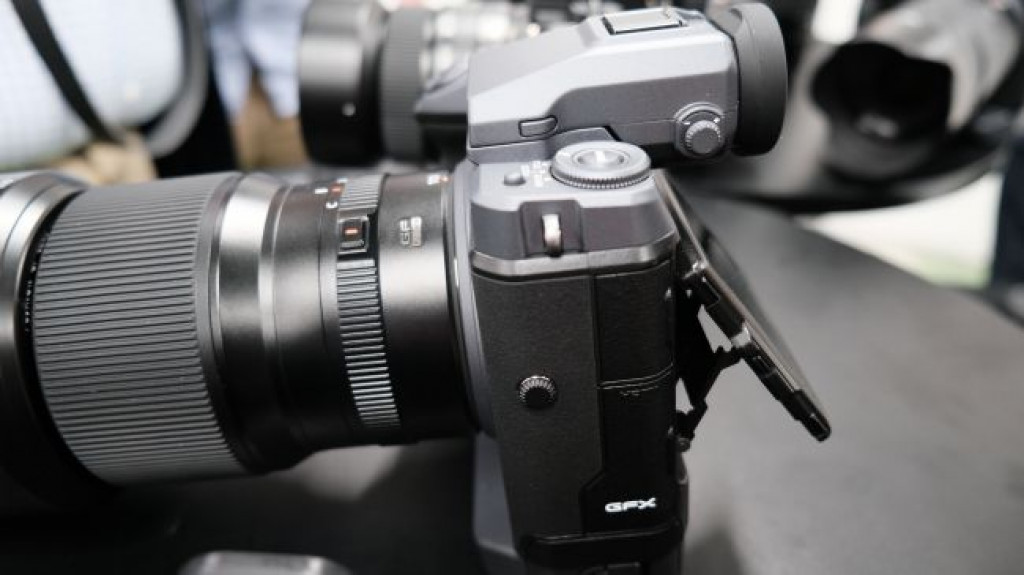
Performance
We only had very limited hands-on time with the retail GFX 100 at the launch event and weren’t able to look at final image quality – most of our actual shooting tests were carried out on a prototype, so everything we say about performance here is obviously somewhat tentative.
That said, the few shots we did take with the GFX 100 looked superb on the rear display, even when very zoomed in. We saw some prints of shots taken with the camera and were amazed at the level of detail in the shadows.
The GFX 100’s five-axis image stabilization should help to maintain both sharpness and detail, and here it offers a 5.5-stop shutter speed advantage. We tried shooting at a shutter speed of 1/6th of a second, but without being able to review the image quality on a PC, we’re not entirely sure how effective the stabilization system here is.
We also didn’t get to try the new Smooth Skin Effect, which automatically smooths out the sharp details on skin captured in high resolution images – we’re keen to see how well this feature works.
When it comes to ergonomics, we’re a little undecided, as a lot of this comes down to personal preference. As we mentioned earlier, this is a larger camera than most, and weighs in at 1.4kg with dual batteries, mounted EVF and a memory card. It’s also 5.67 inches tall (144mm) with a maximum depth of 2.96 inches (75.1mm). For anyone with small hands, the GFX 100 could honestly be hard to wield for long periods of time. However, it’s a little too early to deliver final judgement on that, considering our hands-on time with the camera was limited.
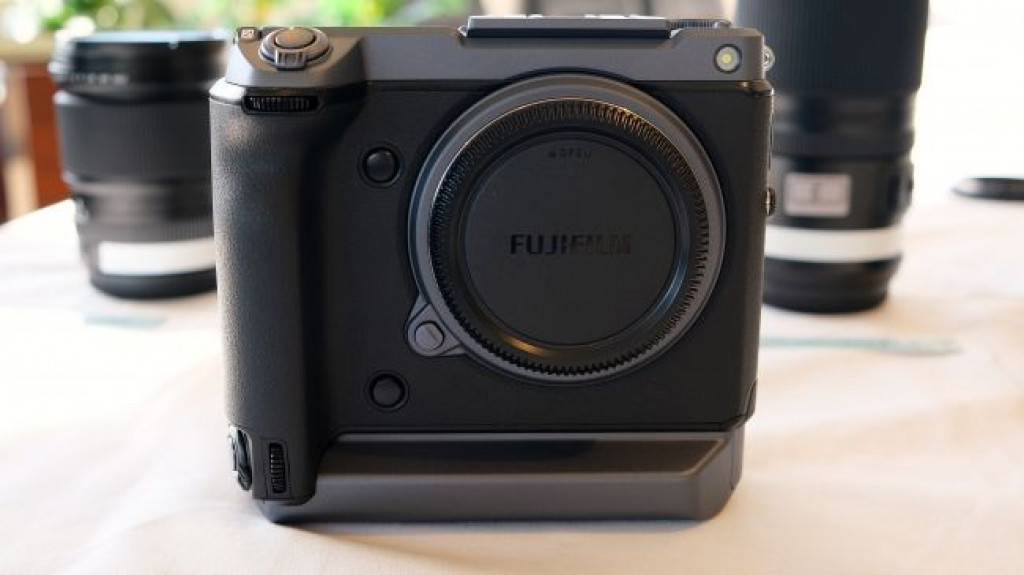
Early verdict
With a body-only price tag of US$9,999 (£9,999, about AU$14,480), not everyone will be queuing up to purchase a GFX 100. That’s almost double the price of the GFX 50S, but in the new model’s defense, you are getting double the camera too – twice as many pixels, in-body stabilization, superb phase-detect AF and, for the first time in a medium format snapper, 4K video.
During our short time with two units, we found the AF performance to be exceptional and the new EVF is seriously impressive. We’re still undecided about the handling, but it’s likely that spending more time with the GFX 100 could win us over. Watch this space for a full review in the coming weeks.
Source: techradar.com









































